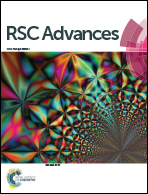Illumina MiSeq sequencing reveals the community composition of NirS-Type and NirK-Type denitrifiers in Zhoucun reservoir – a large shallow eutrophic reservoir in northern China†
Abstract
Denitrification is a major biological process that reduces nitrate to nitrogen gas (N2 or N2O). In shallow eutrophic reservoirs, this process can remove the largest portion of fixed nitrogen and play an important role in the self-purification of this ecosystem. To understand the structure of denitrifying communities in a shallow eutrophic reservoir, NirS-Type and NirK-Type denitrifier communities were explored using a MiSeq high-throughput sequencing technique. NirK and NirS are two functional marker genes for denitrification that encode copper- and cytochrome cd1-containing nitrite reductases, respectively, which catalyze the reduction of nitrite to nitric oxide. MiSeq sequencing revealed a total of 13 102 and 3490 OTUs with 97% similarity for NirS-Type and NirK-Type denitrifiers, which contained 4 and 5 phyla, and 22 and 21 genera for NirS-Type and NirK-Type denitrifiers, respectively. The ACE, Chao diversity, and Shannon richness estimates for NirS-Type denitrifiers were higher than those for NirK-Type denitrifiers. However, the Simpson richness exhibited the opposite trend. The denitrification community structure exhibited significantly seasonal variations during the whole experiment period based on the PCA, Hcluster analysis, OTUs distributions, community composition, and heat map analysis. Meanwhile, the RDA indicated that the total sediment nitrogen, aerobic denitrifiers, functional genes, denitrification rates, and temperature were critical environmental factors influencing the seasonal variation in the bacterial denitrification community.


 Please wait while we load your content...
Please wait while we load your content...